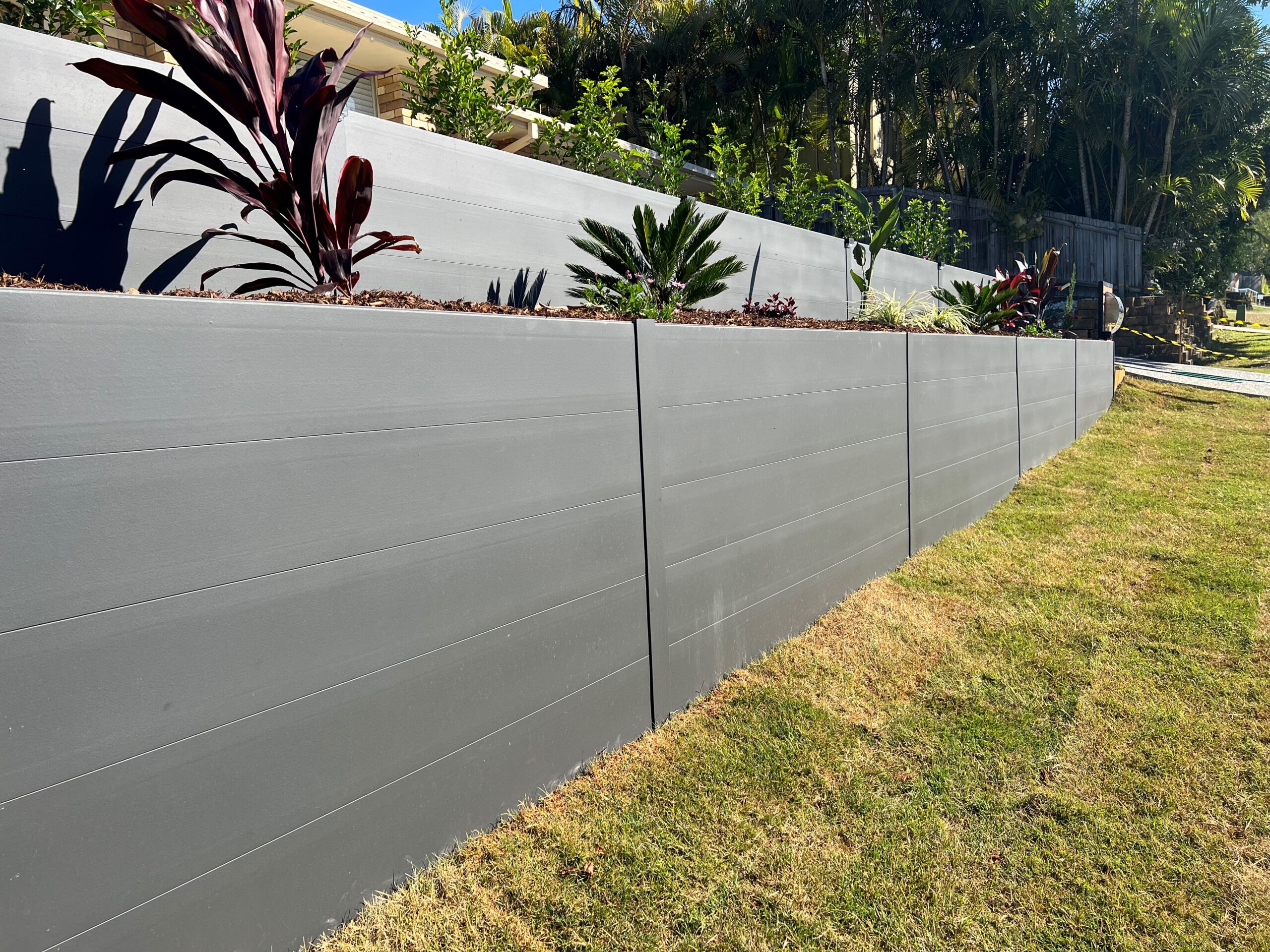Ensuring Structural Honesty: The Relevance of Effectively Built Maintaining Wall Surfaces in Preventing Slope Failure
In the world of civil design and building, the significance of effectively created retaining wall surfaces in avoiding slope failing can not be downplayed. By exploring the detailed interplay between these components, a deeper understanding of the essential duty that preserving wall surfaces play in protecting structural stability and preventing slope failing emerges.
Duty of Retaining Walls in Stability
The indispensability of maintaining wall surfaces in guaranteeing slope stability is extremely important in civil design techniques. Maintaining wall surfaces offer an important function in stopping soil erosion, handling water overflow, and keeping the architectural stability of slopes. By sustaining near-vertical or upright grade adjustments, preserving wall surfaces aid to redistribute lateral stress applied by the soil, therefore lowering the risk of slope failure.
One trick feature of retaining walls is to counteract the force of gravity acting upon the dirt mass behind them. This is attained with proper layout and construction, which takes into consideration factors such as soil type, wall elevation, drainage arrangements, and potential additional charge loads. By successfully maintaining dirt within specified boundaries, these structures assist to maintain inclines and prevent landslides.
Furthermore, maintaining walls contribute to the aesthetics of landscapes while offering functional benefits. They can create terraced levels for landscaping, support roads or frameworks on hillsides, and improve the overall use of sloped terrain. Basically, keeping wall surfaces play an important function in maintaining incline stability and making sure the security and durability of civil engineering tasks.
Factors Affecting Wall Surface Efficiency
Factors that affect the effectiveness of keeping walls consist of dirt residential properties, wall style, and exterior lots. Proper wall design thinks about variables like wall surface elevation, wall surface kind (e.g., gravity wall surfaces, cantilever wall surfaces), reinforcement products, water drainage systems, and building and construction techniques to guarantee the wall can stand up to the side stress exerted by the retained soil. By considering these factors comprehensively, engineers can construct retaining walls that effectively prevent slope failure and ensure lasting structural integrity.
Design Factors To Consider for Retaining Wall Surfaces
Incorporating the critical aspects of dirt buildings and outside lots right into the architectural style process is essential for creating reliable keeping wall surfaces that make certain incline stability. When designing keeping walls, designers need to very carefully assess the characteristics of the bordering dirt, including its kind, drain, and compaction properties. Recognizing these soil residential or commercial properties is crucial for establishing the suitable wall surface height, density, and support needed to endure the side stress exerted by the soil mass.
In addition, exterior lots such as surcharge loads from nearby structures or website traffic, in addition to seismic pressures, need to be taken right into account throughout the design phase. These lots can considerably influence the stability and performance of a keeping wall surface, necessitating making use of correct design strategies and products to minimize potential failure dangers.
Furthermore, the option of appropriate materials, such as concrete, stone, or timber, need to line up with the visual requirements and site-specific conditions. Variable of safety considerations, drain arrangements, and building and construction strategies are also essential aspects that influence the general layout and capability of keeping walls in stopping incline failing. By meticulously taking into consideration these style considerations, designers can guarantee the structural integrity and long-lasting security of retaining wall surfaces.

Building And Construction Best Practices for Sturdiness
When creating keeping wall surfaces for optimal durability and long life, adherence to industry-standard methods and meticulous focus to detail are critical. To make certain the longevity of a preserving wall surface, appropriate website preparation is crucial.
Including support strategies, such as geogrids or steel bars, can improve the architectural honesty of the retaining wall and prevent potential failures. By complying with these construction best practices, retaining wall surfaces can endure the test of time and efficiently prevent slope failing.
Importance of Correct Upkeep
Normal upkeep is vital for protecting the structural stability and functionality of keeping walls with time. Overlooking maintenance can result in issues such as erosion, splits, or also total failure of the wall surface, jeopardizing the security of the slope it sustains. To make certain that preserving walls remain to perform their designated function effectively, normal assessments need to be performed to determine any indicators of deterioration. These evaluations can help in identifying very early indication of possible problems, enabling timely repairs to be executed prior to the problems rise (Retaining Walls Sunshine Coast).
:max_bytes(150000):strip_icc()/rt2tier-186264cbbbe845c1a46fe9a22d213e8d.jpg)
Final Thought
To conclude, preserving wall surfaces play an important function in ensuring architectural integrity and stopping incline failing. By taking into consideration elements influencing wall efficiency, sticking to create factors to consider, adhering to building and construction ideal practices, and executing appropriate maintenance, the toughness of maintaining wall surfaces can be taken full advantage of. Retaining Walls Sunshine Coast. It is vital to recognize the importance of properly constructed retaining wall surfaces in keeping security and stopping prospective dangers connected with slope failure
Variables that affect the performance of keeping walls include dirt residential or commercial properties, wall layout, and exterior tons. Appropriate wall design takes into consideration aspects like best site wall height, wall surface type (e.g., gravity walls, cantilever wall surfaces), support materials, water drainage systems, and building and construction methods to ensure the wall surface can hold up against the lateral pressure applied by the kept dirt. By thinking about these elements adequately, designers can construct preserving walls that effectively protect against slope failing and guarantee long-lasting structural stability.
Maintenance directory tasks might include clearing drainage systems to protect against water buildup behind the wall, repairing any noticeable cracks or damages, and making sure that the wall surface is cost-free from plants that could put in stress on the structure. By thinking about elements influencing wall surface effectiveness, sticking to design factors to consider, following building ideal practices, and applying proper upkeep, the resilience of keeping walls can be maximized.